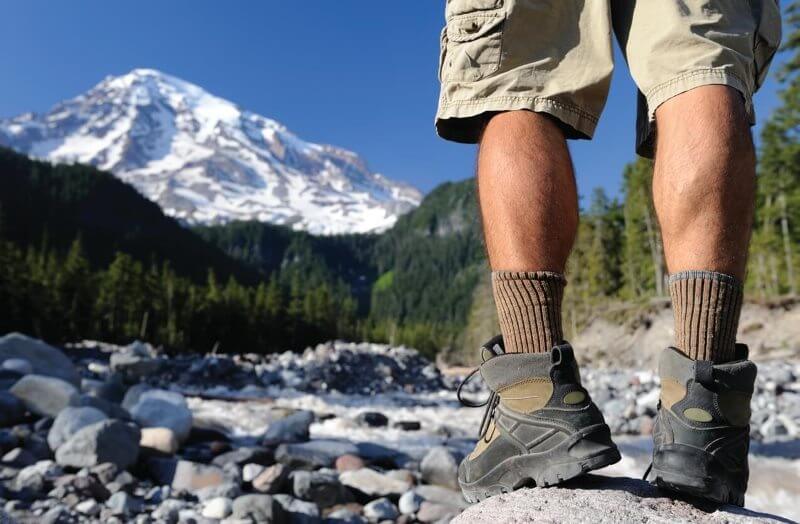The best way to prevent joint pain is good, healthy living. Some of the most successful hikers know that it’s easier to prevent joint pain than it is to manage the pain. So, if you are lucky enough to be without pain, then let's keep you pain-free. These are some of the ways that you can assure your health. Following a good, healthy lifestyle means eating right, keeping hydrated and staying active.
Natural Teas
Studies have shown that many teas have great health benefits. Teas have many minerals and vitamins that feed your joints, keeping them hydrated and healthy. Some of the best teas are as follows.
- Burdock Root
- Peppermint Leaf
- Turmeric Root
- Devil’s Claw Root
- Celery Seed
- Lemongrass
The most important point to remember is that the medicine can be cooked out of the herb. The correct way to make most of these teas is to boil your water and then put it in a cup of the tea. Let it steep for 3-5 minutes covered, and then drink it. Drinking daily doses of these teas will play a big part in keeping your joints healthy. If you already have pain, these teas can help and in some cases, reverse some joint pain damage.
Exercise-Low Impact Cardio
Exercising is the best way to strengthen your muscles, and your muscles help keep all your joints stable. Nordic walking is one way to train these muscles. So, how should you exercise? Not just any exercise will do. Many exercises can or will end up hurting you if done incorrectly. Your best bet is to consult a knowledgeable personal trainer. A personal trainer will be able to build an exercise plan and instruct you on the proper way to do each exercise.
Losing Weight
Lightening the load will give your joints an easier time. Even if you are very muscular, the added muscle weight is very taxing. Long lean muscles work best for active sports like hiking. You want to be healthy and lean!
Bone Broth
Bone broth is so amazing I would almost call it a real medication. Bone broth is full of nutrients and minerals that your body needs. It is especially good for the sick or people that have high energy needs. Bone broth is a perfect way to strengthen bones, muscles, and joints.
The chondroitin sulfates and glucosamine will bring down joint swelling and keep inflammation from becoming an issue on your hike. The calcium, magnesium and other compounds will feed your body, making it stronger. This is a simple recipe for bone soup. You can use any bones, but I find that beef knuckle bones have the most gelatin, and that’s what you are looking for.
- Big beef knuckle bone 3-5 lbs (you can ask a butcher for one)
- 1 tablespoon apple cider vinegar with the mother
- A pound of carrots
- A pound of celery
- 3 cloves of garlic
- One onion
- Bay leaf if you have it
- Salt
To assemble, throw everything into a crock pot, add enough water to cover the bones, and allow it to simmer for 24-48 hours. If you don't want to carry all these using plastic bags, make sure you use your duffle bag. The carrots, celery, garlic, and onion are just for taste. You could just boil the bones, vinegar and a touch of salt. This is really an excellent thing anyone can do for their health, but hikers will really benefit from this soup.
Drinking Water

Most people are dehydrated, and hikers need to be aware of their hydration level. Our bodies are 57%-60% water. Hikers missing a few hours of rehydration in adverse conditions can already start causing damage to the body. We need to keep hydrated to keep our joints properly lubricated. By starving your body of water, the joints will also lose moisture, causing pain and increasing the likelihood of injury.
Eat Fish
Fish, and specifically oily fish have a great many nutrients to keep our skeletal system strong. Some good types of fish to eat are mackerel in oil, salmon, sardines in oil, and tuna in oil. These types of fish can be taken on hikes either canned or even as salmon jerky. We are after the omega-3 fatty acids. Not only are they a fantastic source of vitamins like A, D, and E, but they are essential for your nervous system. Your eyes and brain are dependent on omega-3 fatty acids.
Massage
Giving yourself simple massages can help to prevent injury when you are getting ready for a hike. Massaging your joints and muscles increases your range of motion and flexibility. Half an hour before a hike, sit down and massage your legs, starting at your ankle. Don’t rush this process because it just won’t be effective. While on your hike, remember to do this again on all of your breaks. You will notice how well this works for you!
Medication
I included this last on our list because it should be the last option. You can see your doctor and voice your concerns about joint health while on a hike. For some people with reoccurring knee injuries, your doctor may suggest steroids or a host of other medications to combat pain and swelling.
Some doctors may also give corticosteroids by injection to the joints. This can either work or not work, but if it does, you may have days worth of relief. Your doctor may have other options available in all sorts of forms (pills, shots, and creams): some over and others under the counter. A combination of the above strategies will assure you are in the best shape possible to prevent joint pain while on the trail. Enjoy the outdoors while trying to stay in the best shape you can be. It’s easier to prevent an injury than it is to heal one!


